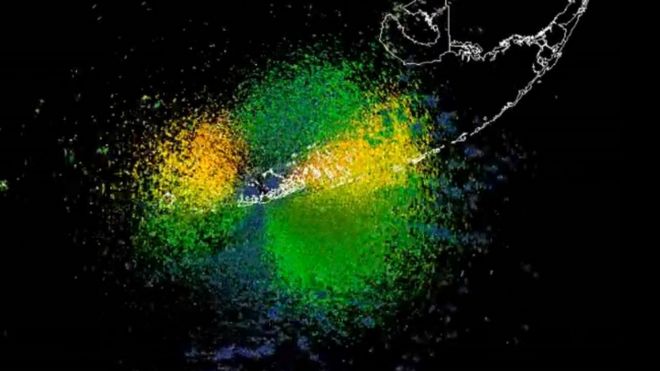Radar captures huge bird migration over Florida
A huge swarm of birds migrating is nothing unusual - flocks can fly thousands of miles undetected.
But in a rare event on Monday, US National Weather Service radar captured birds migrating from South America over Florida.Atmospheric conditions caused the systems to detect the birds, which took hours to fly over the Key West station.
The group measured at least 90 miles (145km) in radius, according to meteorologists.
In 2017 a swarm of migrating Printed Lady butterflies was detected by radar over Colorado, but the phenomenon is rare.
Millions of birds make arduous journeys of thousands of miles every year to migrate with the seasons to breed and seek food supplies.
In the Americas, birds fly north from South America and the Caribbean to the US, starting in the early months of the year, before returning.
An animation produced by Cornwell University shows 118 migratory species in the Americas, some beginning their journeys north in February, with the largest movement in March and April.
One of the birds that flies over Florida after spending the winter in the Caribbean and Central America is the tiny northern parula, with a wingspan of just 6-7 inches (16-18cm).
The pectoral sandpiper also flies over Florida, making a round trip of nearly 19,000 miles. It nests in Alaska and northern Canada, before wintering in southern South America.
The exact reasons how and why birds choose to migrate at a certain time are not fully understood.
"Some birds might be hanging out on the Yucatan or in Cuba waiting for tailwinds to pick them up," Gina Kent, a conservation scientist with the Avian Research and Conservation institute, told the Tampa Bay newspaper.
"On a good wind, more birds that might not otherwise be ready could jump on it."
The group that passed over Key West started in Cuba the day before, passed over the Keys and landed in Florida just before sunrise on Monday, said Weather Service meteorologist Kate Lenninger.
Specific weather conditions in Florida caused the radar to capture the birds' presence.
"There was kind of a stable layer of air above us that was deflecting the radar beam closer to the surface," Lenninger added. "So, we were able to pick up more low level objects."
Radar in Florida detected birds (in green and yellow) flying 3,000 feet in the air
https://www.bbc.com/news/world-us-canada-51545711





Post a Comment